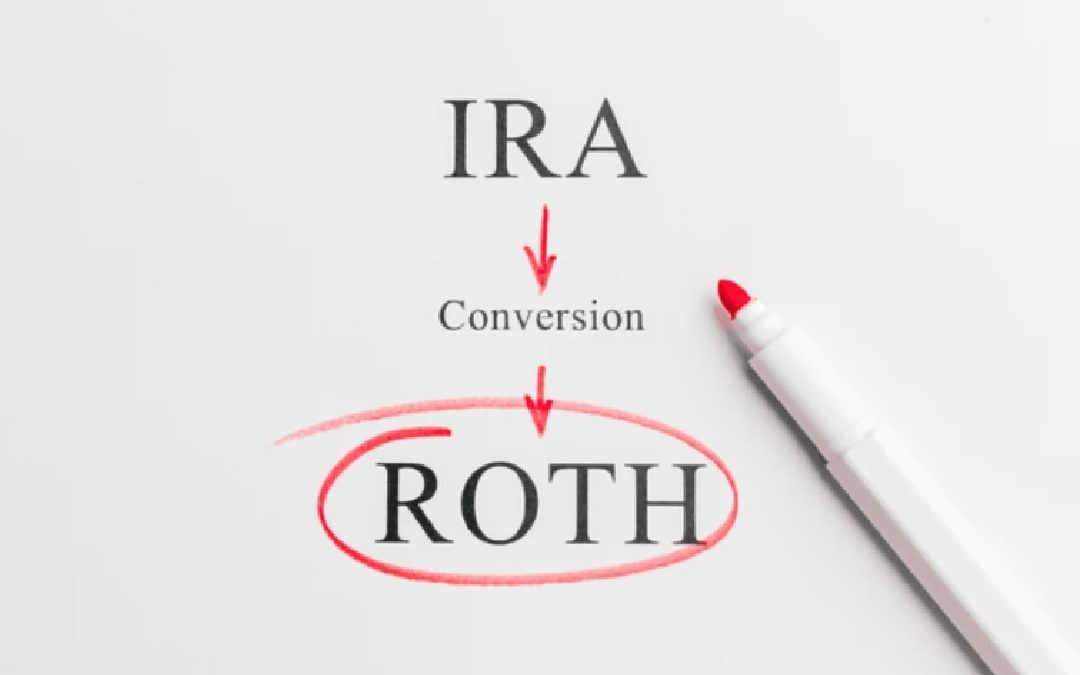Traditional IRAs and Roth IRAs: These retirement options present some real challenges for planning. A common question is whether to move money from a traditional IRA to a Roth IRA. Knowing how Roth conversions are taxed is really important when you’re making this decision.
A Roth conversion involves paying taxes now on the converted amount. This strategy offers potential tax-free growth and withdrawals later, but the upfront ROTH conversion taxes are a significant consideration.
Ready to begin? Here’s the plan.
- Understanding ROTH Conversion Taxes
- Converting a 401(k) to a Roth IRA
- Roth IRA Conversion Steps and Documentation
- Conclusion
Understanding Roth Conversion Taxes
When you move funds from a traditional IRA or 401(k) to a Roth IRA, the converted amount becomes part of your taxable income for that year. You’ll need to account for this in your tax planning.
The money you convert is added to your income and taxed at your regular income tax rate. Because Roth IRAs use after-tax dollars, the benefit comes later with tax-free withdrawals in retirement.
How Taxes are Calculated on Roth Conversions
The tax you pay depends on your income bracket. For example, in 2025, tax rates range from 10% to 37%.
Let’s say you’re in the 22% tax bracket and convert $20,000. This adds $20,000 to your taxable income, resulting in a $4,400 tax bill on the conversion, assuming it doesn’t push you into a higher bracket. Make sure you have enough money set aside; tax time can be expensive. Paying your taxes may seem confusing, but we’ll get through it.
Projecting your taxes can help you determine the optimal timing for the conversion. Spreading your conversion over several years might be a viable option for some.
Strategies for Reducing Taxes on ROTH Conversions
Here are several strategies to lower ROTH Conversion Taxes and minimize your tax liability:
One strategy is to “max out your bracket.” If you’re single and earning $150,000 a year, you’re in the 24% tax bracket. Consider converting up to $41,950.
The next bracket starts at $191,950. You’ll get tax advantages now, plus there’s a good chance of long-term gains. Avoid using retirement funds to pay these taxes.
Using separate savings preserves your retirement balance for long-term growth. It allows you to fully benefit from compounding interest.
Timing Your ROTH Conversion
Timing is crucial when deciding on a Roth conversion. If you anticipate a lower income year, converting during that time can result in paying less tax.
Thinking about a bigger paycheck down the road? Wow, that’s a really good play; I hadn’t thought of that. See the long-term results of a Roth IRA conversion using Charles Schwab’s handy calculator.
Using a Roth IRA Conversion in Your Retirement Plan
After age 59½, you qualify for distributions after meeting a five-year requirement and account creation. Before this, earnings distributions may be subject to an early withdrawal penalty.
One strategy is a Roth conversion during these years. Another is converting to a ROTH during this period, potentially maximizing tax benefits.
Future Benefits of Roth Accounts
A significant advantage is the absence of Required Minimum Distributions (RMDs) with Roth IRAs. Traditional retirement accounts often require distributions to begin at age 73.
Unlike a tax-deferred account, your assets could potentially grow tax-free, and you won’t have to worry about RMDs. Tax-free growth and flexibility provide peace of mind.
RMDs will eventually rise to age 75. So it’s good to have options for your retirement planning.
Converting a 401(k) to a Roth IRA
Moving money from a 401(k) to a Roth IRA requires a careful approach. Your actions should be exact.
Ensure the transfer is direct to avoid automatic tax withholding. It’s better for your wallet.
Direct Transfers and Withholding
If your company issues a check, you have only 60 days to deposit it into the Roth IRA. A delay can lead to penalties, especially if you are under 59½.
Even with a direct transfer, you still owe income tax on the converted amount. Taxes must be addressed regardless of the transfer method.
Handling Taxes
Usually, taxes are withheld with each paycheck. If this plan falls through, there are always backups.
For substantial Roth IRA conversions, this process may change, requiring estimated tax payments quarterly. Small businesses, self-employed individuals, and companies typically make these payments in mid-April, June, and September, helping them estimate their quarterly income.
Late payments mean extra charges. Penalties and additional costs will be added to your bill. Learn more about filing Form 8606.
Understanding Safe Harbor Rules
Safe harbor rules protect you if you pay at least 100% of the previous year’s taxes. Borrowing over 100% protects you from paying interest.
This applies to times when your paychecks get a whole lot bigger. Even if your income rises, your penalties are reduced as long as you meet the minimum required payment levels.
Roth IRA Conversion Steps and Documentation
First, you’ll need a traditional IRA or another type of retirement account. Then, you can proceed with the conversion to a ROTH.
You might already have one of these retirement accounts open. IRA income and contributions are taxed. Remember to plan for this.
Here’s more detail on how you can use IRC section 408(d)(6). Also, review any specific instructions on your investment platform’s site for further clarification.
Ways to Convert
There are different methods to complete the conversion. The options are varied and adaptable to your needs; it’s pretty flexible. The best choice depends on what works for you; choose wisely.
| Conversion Type | Description | Considerations |
|---|---|---|
| Indirect Rollover | Receive the money and deposit it into your Roth IRA within 60 days. | Must be handled within 60 days to avoid tax penalties. |
| Trustee-to-Trustee Rollover | The provider of your Traditional IRA transfers directly to the Roth IRA provider. | Simpler as it avoids having funds go directly to you but still requires documentation. |
| Same-Trustee Transfer | A single provider handles both IRAs. | Fast and simpler, for example, when using Schwab.com. |
When a Roth Conversion Might Not Be the Best Idea
Although Roth IRAs offer benefits like tax-free retirement withdrawals, there are potential downsides. A conversion might cause financial strain or it may be more beneficial to stay with a traditional account.
A backdoor Roth can assist with retirement planning. Talk to a financial advisor; they can help you figure out what you need.
Conversions may only make sense in certain situations; you might choose to keep things as they are and adjust your contributions going forward.
Conclusion

ROTH conversion taxes may appear complex, but understanding the details can lead to significant financial advantages. Use the tools to your advantage; plan and time your conversions carefully.
Staying informed about rules and utilizing different strategies allows for a custom approach. Smart tax planning now can help you retire comfortably, even with future tax changes.



